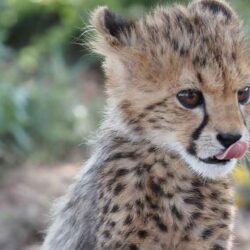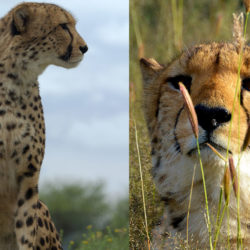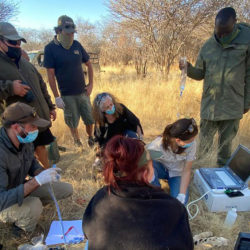Eulogies for Two Resident Cheetahs – Livingstone and Blondeman (Shunga)
-
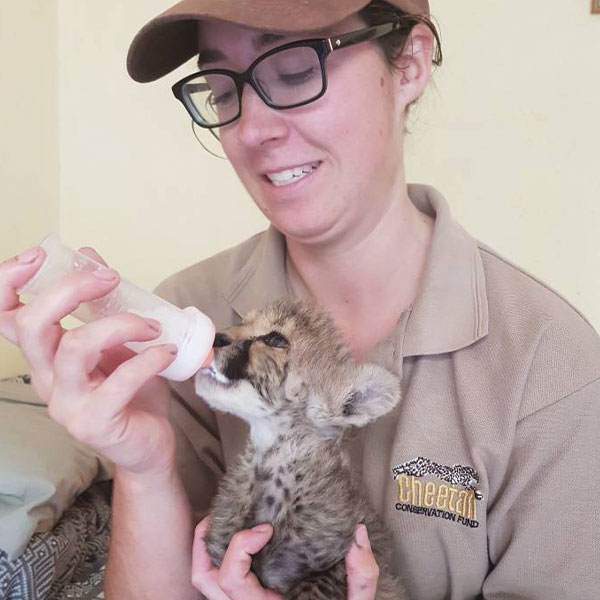
- by Becky Johnston December 11, 2020

Shunga
Shunga, or Blondeman as his keepers called him, arrived at CCF in July 2008 with his brother N’Dunge (or Smartman) at only three months of age after being found in the Gobabis region without a mother. Like many of the young cubs that arrive at CCF, they were scared, and missing their mom. Drs Laurie Marker and Bruce Brewer cared for them in the CCF nursery, and, luckily, another cheetah named Little C was only about six months older than them and was willing to take them in and show them the ropes of life at CCF. They immediately loved him and have lived together with him for their entire life along with another orphaned male cheetah named Ron. They developed a strong coalition group. Shunga and N’Dunge looked quite similar from a distance, but were easy to tell apart once up close, because of Shunga’s white paws compared to his brother’s dark paws. Some also say he was called Blondeman because he maybe wasn’t the smartest cheetah when he first arrived, but we find that hard to believe, and would never, ever tell him that.
Shunga typically was the “follower” in the group, very relaxed and laid back, following Little C or his brother, N’Dunge, around, doing whatever they wanted to do. Except when it came to running. Running after our lure course that we use to exercise our resident cheetahs was definitely not Shunga’s favourite activity. He would much rather sniff every single tree in the enclosure and try and locate the females that had been in there the previous night. If they were spotted along the fence line, he would immediately start prancing and trotting, holding his head up high, showing off what a beautiful, handsome male he was. Unfortunately the tactic never worked with the females, but he was always hopeful. Him and his brother would call for hours, waiting for one of the females to answer. It was so loud that the cheetah team could hear it from our office, and it always made us laugh. The rare occasion that Shunga did run, he ran beautifully, and the keepers would cheer him on and reward him with lots and lots of meat treats to try and encourage the behaviour. But every cheetah run, it was a gamble whether Shunga would run or not. Typical cats – they do whatever they want to do, whenever they want to do it.
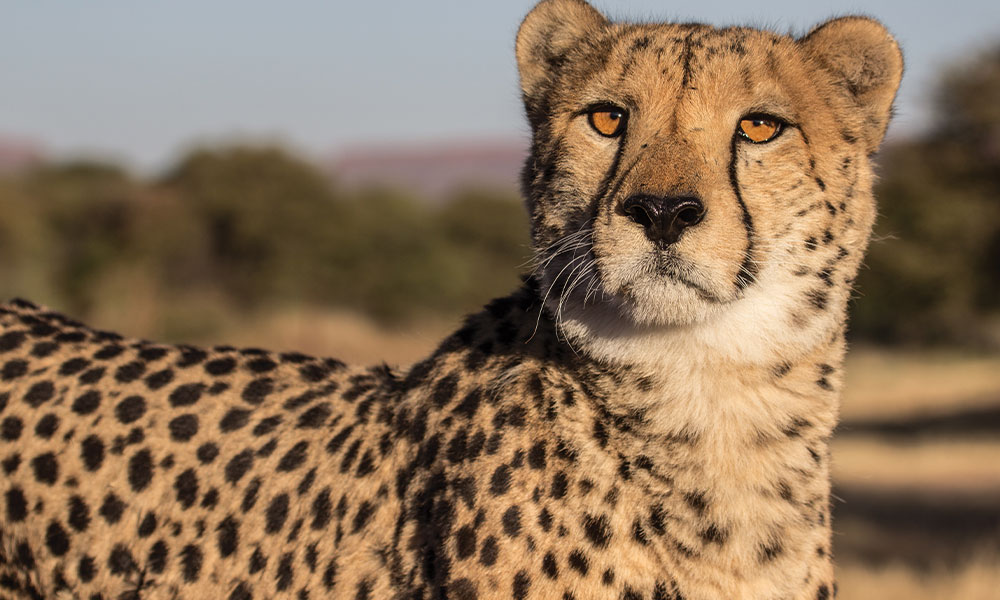
Because of his laid-back nature, Shunga was a very easy cat to work with. He was always perfect whenever we did any sort of training with him, as long as food was involved. Crush cage training is especially important with our older animals, as it allows us to safely capture the animal without a need for anesthesia and perform minor medical procedures such as taking blood, treating wounds, giving sub-cutaneous fluids, or giving eye drops in a calm and safe environment for both the cheetah and the keepers. Shunga at times had to be coaxed out of the catch cage, because he would sit in there, waiting very patiently for his treat, even though we didn’t need him in the catch cage to begin with.
Being nearly 13 years old, we had expected to start to see some issues from old age from Shunga. As cheetahs age, their teeth naturally wear down, and in the past few months, we had noticed that he was struggling to eat his meat off of the bone, so we had started giving him mince meat to make it very easy not only to eat, but also to digest. Shunga and his brother like many other cheetahs had very sensitive digestive systems, and we had to constantly monitor their body condition to make sure that they were digesting their food properly and maintaining their weight. Shunga was always eager for food, so when he suddenly stopped showing interest in any of the food that we offered him – mince, organ, chicken – we knew that something was wrong. Working with our vet team, we drew blood from him, which showed multiple organ failure. And unfortunately, a workup in the clinic confirmed our worst fears. That multiple organs were not functioning properly, and that there was very little we could do for him to fix it. The decision was made to euthanize him, with no pain or suffering for Shunga.
Shunga was not only an amazing cat to work with, but also a great ambassador for his species. He will be greatly missed by his keepers, CCF staff, and everyone whose lives he touched.

Livingstone
Livingstone came to CCF along with seven other cheetahs in March 2007, after being trapped as a cub for hunting blesbok and springbok. They were kept in a garage with no daylight for about six months, which caused calcium deficiencies that stunted their growth. Under the expert care of Dr. Laurie Marker and the CCF staff, they were given a correct diet and exercise once they arrived, but unfortunately the damage to their joints was permanent, and they stayed small and stunted for the rest of their lives. It made Livingston easy to tell apart from the other cheetahs though, and it never affected his every day life.
Livingstone lived most of his life in a male coalition group which we fondly called “The Scientists”. It consisted of Livingstone (named after David Livingstone), Darwin (Charles Darwin), Fossey (Dian Fossey) and Mendel (Gregor Mendel). The four of them were a strong, very closely bonded group, and always let the other cheetahs in the area know that they were in charge. Livingstone was the quietest out of the four, typically following Mendel or Fossey’s lead. When some of our older cheetahs passed away, it presented the opportunity to move some cats around. The males were in for a bit of surprise when we moved them in with two females – Rohini and Polly. The males had been castrated beforehand, as breeding large carnivores in captivity is illegal in Namibia. The first couple of days, the males tried to assert their dominance, but the two females very quickly put them in their place at the bottom of the totem pole. Livingstone seemed alright with this agreement, as long as he was still the first to get food. That was one of the most important parts of the day for Livingstone – food time! Every morning when he heard the food truck approaching the feeding camps, he would run over as fast as his short legs could carry him and wait (not very patiently) at the door. Him and Darwin were the most vocal cats out of the group and would let you know exactly how hungry they were by vocalizing the loudest chirps and meows they could until they were fed. For small cheetahs, they were loud! His favourite days were when we had behind the scenes tours with guests, or school groups come by. He would sit at the fence and meow at them, telling everyone what I’m sure was his life story, and how his keepers never fed him and he was starving, even though we did feed him every single day, I promise! Guests loved it, and the cameras would immediately come out to record him. It was a great opportunity for us to explain a little bit about the vocalizations cheetahs can make, as they are a little bit different than what you might expect.
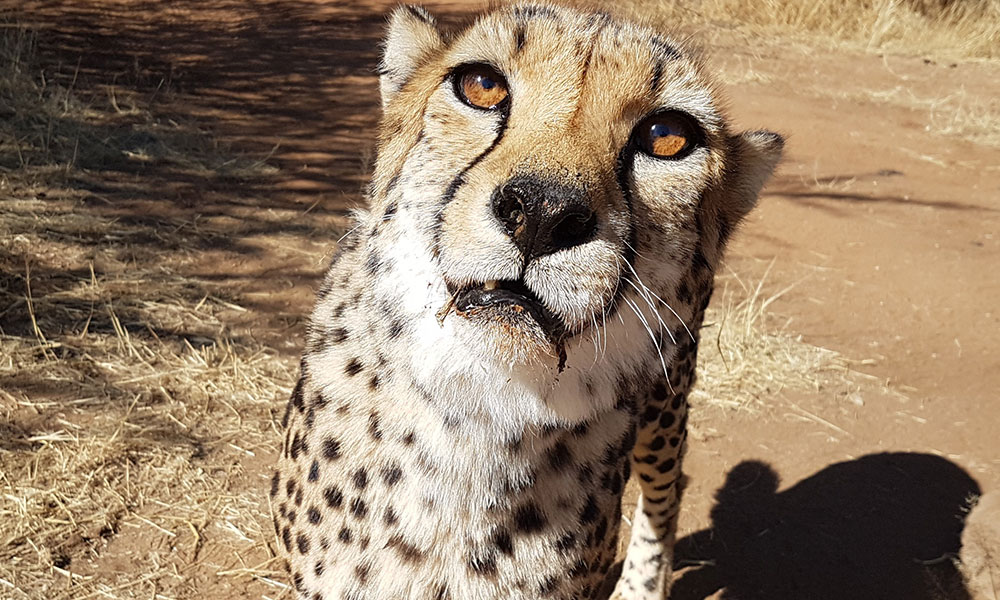
Being just over 14 years old, we had expected to start to see some issues from old age from Livingstone. Because of his poor start in life, poor diet and lack of exercise before coming to CCF, he not only had stunted growth, but also ongoing teeth issues with either very worn, or broken teeth. We were constantly watching how he was eating, and if he was having any difficulty we would bring him into the clinic for routine dental work. Over the past few months, he had also started to lose his vision, so the cheetah team made the decision to move him into a slightly smaller enclosure, so that he didn’t get lost in the large enclosure, and so that we could monitor him very closely. When he stopped showing interest in food and became quite lethargic, the cheetah team became quite concerned. Working with our veterinarians, we brought him into the clinic for a workup, where we drew blood, and took x-rays. While we did find a broken tooth, there was nothing else that was obviously wrong with Livingstone health wise that we could fix. Unfortunately, his health continued to deteriorate after the workup, and despite the best effort of the cheetah team and the veterinarians, Livingstone passed away peacefully in his sleep a couple days later.
Livingstone was not only an amazing cat to work with, but also a great ambassador for his species. He will be greatly missed by the last remaining “scientist” Darwin, as well as his keepers, CCF staff, and everyone whose lives he touched.
Related Reading
-
May 8, 2025
Help T-Swift to Begin Again -
April 5, 2022
Eulogies for Ron and Khayjay -
November 5, 2021
Field Scans and Clinic Exams with SoundVet

